Discover the fascinating world of Vietnam museums! Explore the stories of the past at the War Remnants Museum, marvel at beautiful artwork at the Vietnam National Fine Art Museum, or learn about different cultures at the Vietnam Museum of Ethnology. With so much to see and do, your visit to Vietnam’s museums will be an unforgettable adventure! Come along and dive into the rich history and culture of this amazing country.
See more: Discover Vibrant Vietnamese Culture on Your Adventure
Top 9 ‘Must Visit” Vietnam Museums in Your Journey
War Remnants Museum (Ho Chi Minh City)
Journey through Vietnamese history at the War Remnants Museum, a powerful and poignant landmark in Ho Chi Minh City. This captivating museum sheds light on the struggles of the Vietnamese people during the First Indochina War and the Vietnam War.
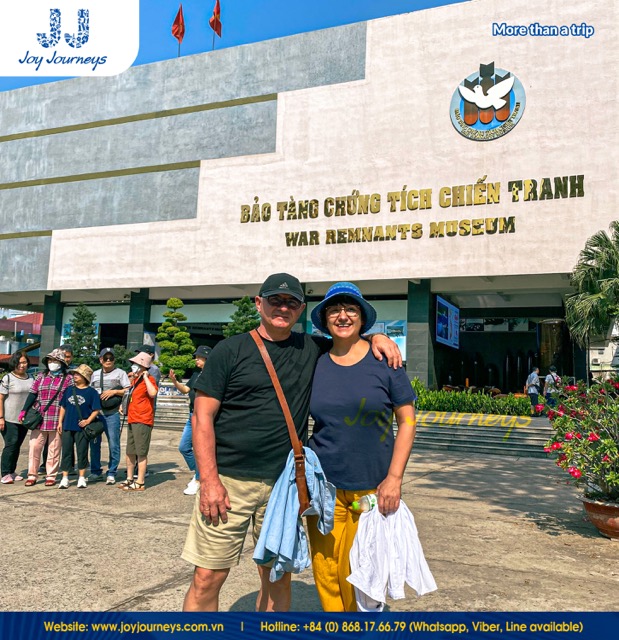
Located conveniently at 28 Vo Van Tan, in District 3, Ho Chi Minh City (Saigon), Vietnam, the museum offers a comprehensive exploration spread across three floors. As you enter, you’ll find the ticketing area and a multipurpose room. Head further to delve into exhibits showcasing the unwavering Vietnamese resistance.
A particularly striking display is the reconstruction of “Tiger Cages” – brutal confinement cells used during the war. This exhibit serves as a stark reminder of the harsh realities of war.
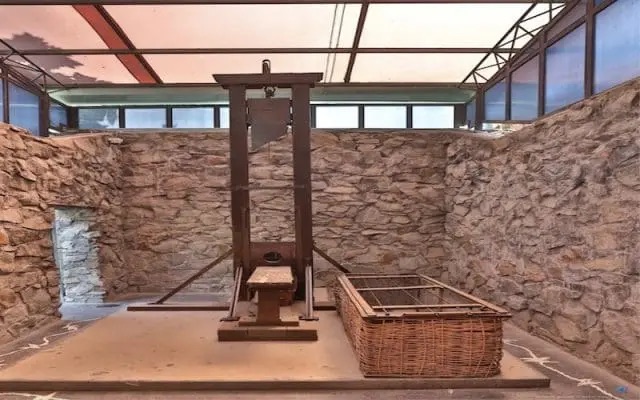
The museum’s main focus lies in portraying the Vietnam War from the Vietnamese perspective. Expect to see exhibits featuring wartime artifacts, photographs, and documents. These depict the impact of the war on civilians, the use of chemical weapons, and the aerial bombings in North Vietnam.
Stepping outside the museum, you’ll encounter stalls showcasing Vietnamese cultural artifacts, offering a chance to take home a piece of Vietnam as a souvenir.
Planning your trip:
- The War Remnants Museum is open every day, including holidays, from 7:30 AM to 5:00 PM.
- The entrance fee is a reasonable 40,000 VND per person, with significant discounts available for students, veterans, and underprivileged groups.
Ho Chi Minh City Museum of Fine Arts (Ho Chi Minh City)
In the heart of Ho Chi Minh City, there’s a hidden gem waiting to be explored: the Ho Chi Minh City Museum of Fine Arts. This beautiful museum used to be a fancy mansion, and it still holds that old-world charm today.
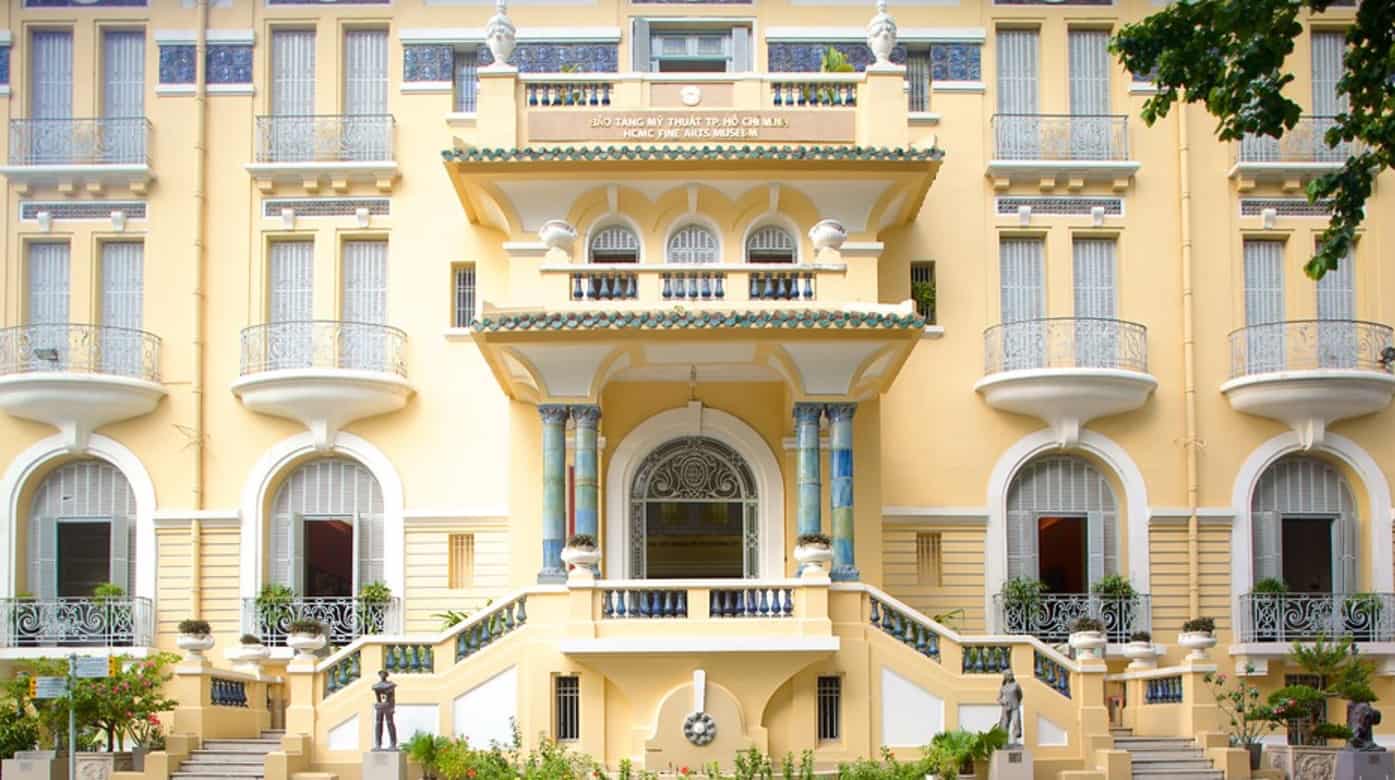
Here’s what makes this museum so special:
- Over 22,000 artworks await you! From ancient sculptures to modern paintings, the museum offers a dazzling journey through Vietnamese art history.
- The museum building itself is a masterpiece, blending European and Asian styles in a stunning Art Deco design.
Visitors are invited to explore the museum’s three distinct buildings, each offering a glimpse into different facets of Vietnamese art:
- Building 1: A showcase of modern artworks from esteemed artists of the Gia Dinh school and Indochina Fine Arts, as well as masterpieces from the pre-1975 era.
- Building 2: A curated collection of artifacts, meticulously arranged according to thematic categories and diverse artistic styles.
- Building 3: An exploration of ancient and contemporary art crafted from unique materials such as stone, ceramic, and wood, providing insight into Vietnam’s rich artistic heritage.

Beautiful Architecture in the Museum – Source: Collected
Planning your trip:
- Conveniently located at No. 97A Pho Duc Chinh, District 1, the museum welcomes visitors from 8 am to 5 pm daily, offering ample opportunities to delve into its artistic wonders.
- Admission prices are modest, with adults priced at 30,000 VND per trip, students at 15,000 VND per trip, and complimentary entry for children under 6 years old and adults over 60 years old.
Ho Chi Minh City Museum of History (Ho Chi Minh City)
The Ho Chi Minh City Museum of History, located at 2 Nguyen Binh Khiem Street in District 1, is a prominent institution dedicated to preserving and showcasing Vietnam’s rich cultural heritage. Established in 1929, the museum houses an extensive collection exceeding 40,000 artifacts.
The museum’s collection originated with 2,893 artifacts, primarily from the Holbé collection, and has grown significantly over the years. These artifacts represent various periods of Vietnamese history, offering valuable insights into the nation’s development.

Beyond the artifacts, the museum boasts a comprehensive library with over 25,000 books, newspapers, and documents. This resource serves as a valuable research hub for archaeologists, ethnologists, historians, and museum professionals.
The museum’s architecture reflects a unique blend of traditional Indochina design and European influences prevalent during Vietnam’s French colonial period (1920-1945). The exterior’s historic facade contrasts with the modernized interior, creating a harmonious fusion of past and present.
Planning your trip:
- The museum is open from Tuesday to Sunday, with opening hours from 8:00 AM to 11:30 AM and 1:00 PM to 5:00 PM. Mondays are closed. Admission is priced at 30,000 VND per person, with discounted or free entry available for specific categories.
- Children under 6, individuals with disabilities, and those from economically disadvantaged backgrounds receive free entry.
- Students, children under 16, senior citizens over 60, and individuals recognized for national service contributions enjoy a 50% discount on admission fees.
Vietnam Museum of Ethnology (Museum in Hanoi)
The Vietnam Museum of Ethnology, situated on Nguyen Van Huyen Street in Hanoi’s Cau Giay district, is dedicated to preserving and showcasing Vietnam’s rich ethnic tapestry. Established in 1995, the museum falls under the Vietnam Academy of Social Sciences and serves multiple purposes:
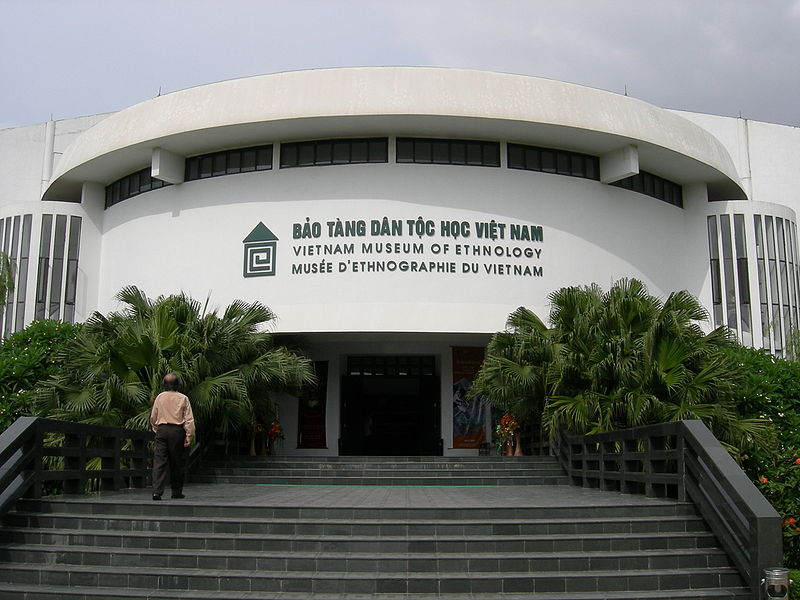
- Research: Conducting scientific research on Vietnam’s ethnic groups.
- Collection: Gathering artifacts and documents related to these groups.
- Preservation: Ensuring the safekeeping of these collected materials.
- Exhibition: Displaying these artifacts and documents for public education.
- Dissemination: Promoting awareness of Vietnam’s ethnic diversity both within and beyond Vietnam.
Designed with a focus on functionality and aesthetics, the museum complex spans nearly 4.5 hectares and features three key exhibition areas:
- The Bronze Drum Building: This two-story structure houses exhibits dedicated to Vietnam’s 54 officially recognized ethnic groups. Visitors can explore traditional customs, way of life, and cultural aspects of each group, including the Tay, Thai, H’mong, and Dao.
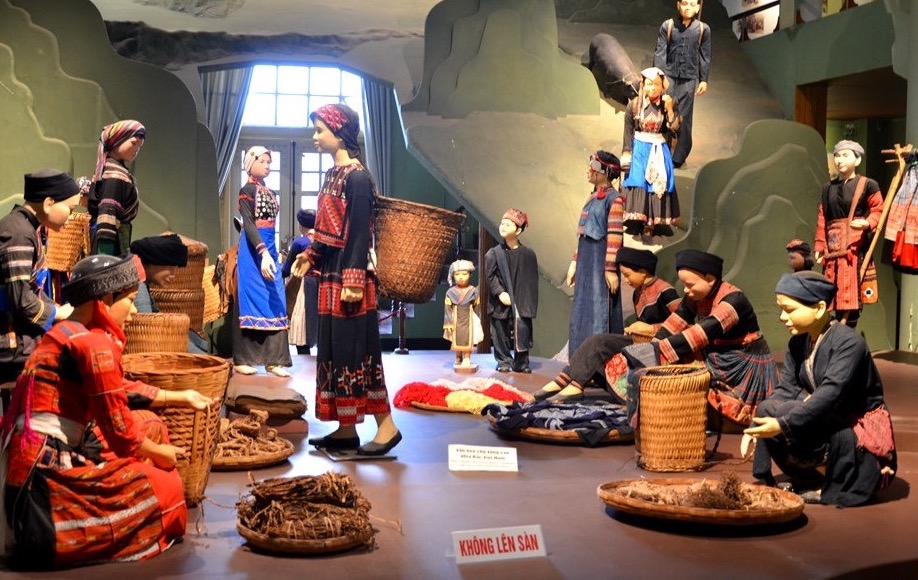
Exploring the Vietnamese Culture inside the Museum – Source: Collected - The Architecture Garden: Covering 2 hectares, this outdoor space showcases 10 distinct architectural styles representing various Vietnamese ethnicities. From stilted houses to communal halls, these structures provide a glimpse into the architectural diversity and cultural identity of Vietnam’s ethnic communities.
Planning your trip:
- The Vietnam Museum of Ethnology is open from Tuesday to Sunday, 8:30 AM to 5:30 PM, with closures on Mondays and Vietnamese Lunar New Year.
- Admission is 40,000 VND per person, with discounts available for students and some ethnic minorities.
- Free entry is offered to children under 6, individuals with severe disabilities, and specific cardholders.
Ho Chi Minh Museum (Hanoi)
The Ho Chi Minh Museum, located within the Ho Chi Minh Memorial complex at 19 Ngoc Ha Street, Ba Dinh District, Hanoi, is dedicated to Vietnam’s revered leader, President Ho Chi Minh. Established in 1990, it is one of the largest museums in Vietnam.
Construction began in 1985, coinciding with the centennial anniversary of President Ho Chi Minh’s birth. The museum’s location, amidst landmarks like the Presidential Palace Relics and Ho Chi Minh Mausoleum, reflects its role in commemorating the leader and Vietnam’s history.
Spanning 18,000 square meters, with 13,000 square meters dedicated to exhibitions, the museum is the largest and most modern in Vietnam. It houses roughly 12,000 artifacts, offering a comprehensive exploration of President Ho Chi Minh’s life, achievements, and contributions to Vietnamese independence and unification.
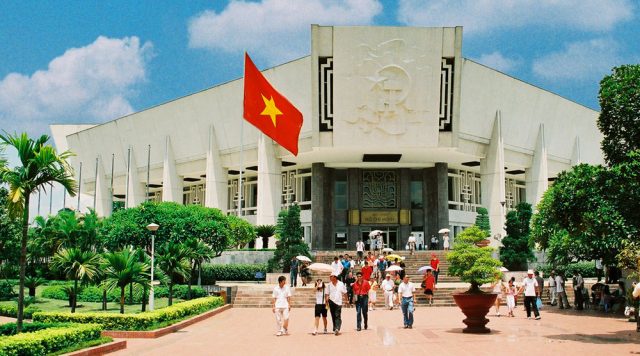
The Ho Chi Minh Museum serves as the flagship institution within a network of 14 museums across Vietnam’s northern, central, and southern regions. This network functions as a cornerstone for preserving and transmitting knowledge about President Ho Chi Minh for future generations.
The museum offers spacious halls suitable for conferences and events, accommodating 50 to 350 people. These facilities cater to educational and cultural activities.
Planning your trip:
- The museum is open daily (except Mondays and Fridays) from 8:00 AM to 11:30 AM.
- General admission for international visitors is 40,000 VND.
- Free entry is available for Vietnamese citizens, individuals with disabilities, and members of the International Council of Museums (ICOM).
Vietnamese Women’s Museum (Hanoi)
Located at 36 Ly Thuong Kiet Street in Hanoi, the Vietnamese Women’s Museum honors the strength, resilience, and contributions of Vietnamese women throughout history. Situated near Hoan Kiem Lake and the Old Quarter, the museum offers a captivating exploration of Vietnamese women’s experiences.
Established in 1995, the museum underwent a major renovation between 2006 and 2010 to enhance its displays. Its vast collection, meticulously curated since the 1970s, encompasses over 25,000 artifacts and documents. These artifacts, categorized by material like textiles and ceramics, tell personal stories and reflect the rich diversity of Vietnamese women’s lives.
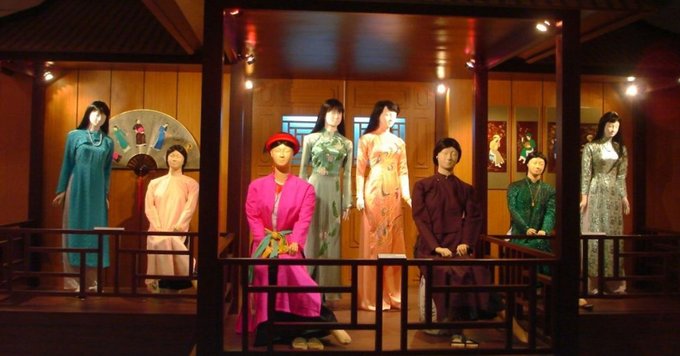
Spread across three floors, the museum’s permanent exhibits explore various aspects of Vietnamese womanhood:
- Second Floor: This section focuses on the life cycle of Vietnamese women, showcasing traditions and customs surrounding marriage, childbirth, and family life.
- Third Floor: Here, exhibits delve into historical events and contemporary life through the lens of Vietnamese women, highlighting their contributions to society and experiences during wartime.
- Fourth Floor: This display celebrates the creativity and artistry of Vietnamese women, featuring regional fashion styles and traditional attire from Vietnam’s diverse ethnic groups.
- Beyond Exhibits: The Vietnamese Women’s Museum also fosters public engagement through educational programs. Its discovery room, established in 2010, caters to children aged 7-15. This interactive space encourages creativity, research skills, communication, and cultural understanding. Children can explore traditional crafts, try on ethnic costumes, and immerse themselves in the rich heritage of Vietnamese women.
Planning your trip:
- Open daily from 8:00 AM to 5:00 PM, the museum welcomes visitors to explore its diverse exhibits.
- Admission to the Vietnamese Women’s Museum is priced at 40,000 VND per person, providing access to a wealth of artifacts, documents, and interactive exhibits that celebrate the resilience and creativity of Vietnamese women throughout history.
Vietnam National Museum of History (Hanoi)
Situated at 1 Trang Tien Street in Hanoi’s Hoan Kiem District, the Vietnam National Museum of History is a prominent institution dedicated to preserving and showcasing Vietnam’s rich past. The museum’s location, surrounded by landmarks like Hoan Kiem Lake and Ngoc Son Temple, reflects its cultural significance.
Established in 1958, the museum has its roots in the French-built Louis Finot Museum (operational since 1932). Occupying 2,000 square meters of exhibition space, the Vietnam National Museum of History houses a valuable collection of artifacts. These include the Ngoc Lu bronze drum, the Hoang Ha bronze drum, the Dao Thinh bronze tower, and statues depicting scenes from Vietnamese folklore.
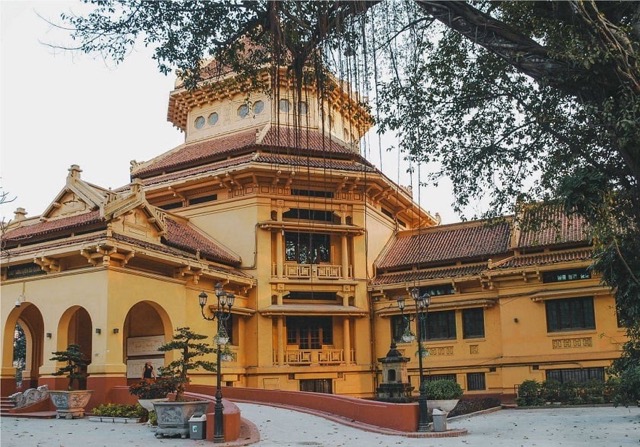
The museum’s exhibits offer a chronological exploration of Vietnamese history, from the nation’s struggles against foreign invaders to the dynasties that shaped its identity. Visitors can learn about the Dinh, Early Le, Ly, Tran, Ho, Le Mac, Tay Son, and Nguyen dynasties, and explore artifacts commemorating the August Revolution of 1945.
Planning your trip
- The museum is open daily from 8:00 AM to noon and 1:30 PM to 5:00 PM, allowing ample time for visitors to explore its collections.
- Admission Fees:
- Adults: 40,000 VND
- Students & Trainees: 20,000 VND (universities, colleges, intermediate schools, vocational schools)
- Students: 10,000 VND (with valid ID)
- Free Entry: Children under 6 and individuals with severe disabilities
- A 50% discount is offered to beneficiaries of preferential policies, the elderly, and individuals with severe disabilities (with valid ID).
Vietnam Military History Museum (Hanoi)
Nestled in the heart of Hanoi’s Ba Dinh District, at 28A Dien Bien Phu Street, the Vietnam Military History Museum stands as a testament to the nation’s storied past and rich military heritage. Open to visitors throughout the week, except for Mondays and Fridays, the museum offers a compelling journey through Vietnam’s military history.
The museum offers a captivating exploration of Vietnam’s military history across various areas. The outdoor display area features a majestic collection of historical artifacts, including aircraft, tanks, guns, and ammunition of significant size.
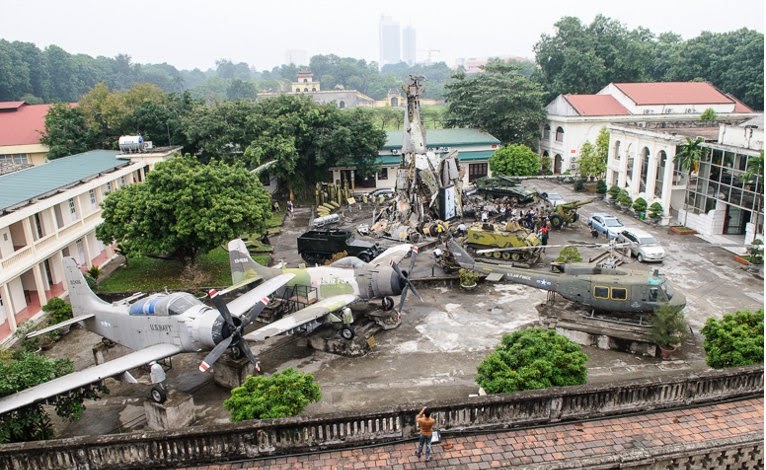
Inside, the first-floor lobby is divided into three sections: one depicting the evolution of the Vietnamese army from the time of the Hung King to Ngo Quyen’s victory over the Nam Han army, another honoring Uncle Ho and showcasing images of the resistance against the French, and a third reconstructing wars from the Ly Dynasty to the Nguyen Dynasty.
On the second floor, visitors delve deeper into Vietnam’s military conflicts against the French and Americans. Detailed documents and images accompany valuable artifacts such as Sam 2 and Sam 3 missiles, MiG19 and MiG2 aircraft, a bicycle from the Dien Bien Phu campaign, and even a tank from the mechanized army’s entry into Saigon on April 30, 1975.
Planning your trip:
- Operating hours are divided into morning and afternoon sessions, with doors opening from 8:00 a.m. to 11:30 a.m. in the mornings and from 1:00 p.m. to 4:30 p.m. in the afternoons.
- Admission to the Vietnam Military History Museum requires purchasing tickets, priced at 20,000 VND per ticket for Vietnamese guests and 40,000 VND per ticket for foreign guests.
- However, certain groups enjoy discounts, including teenagers under 15 years old, the elderly, pupils, and students. For certain individuals, admission to the Vietnam Military History Museum is free, including Vietnamese heroic mothers, soldiers, veterans, and family members of war invalids and martyrs, among others.
Da Nang Museum of Cham Sculpture (Da Nang)
Nestled in Da Nang City at No. 2, September 2 Street, Hai Chau District, the Da Nang Museum of Cham Sculpture stands as a beacon of the Champa kingdom’s artistic heritage. As the largest museum of its kind in Vietnam, it beckons visitors to embark on a captivating exploration.
With a sprawling total area of 6,673 square meters, including 2,000 square meters of exhibition space, the museum’s architectural grandeur is simply breathtaking. Its facade, adorned with elements reminiscent of Gothic architecture, adds an enchanting allure.
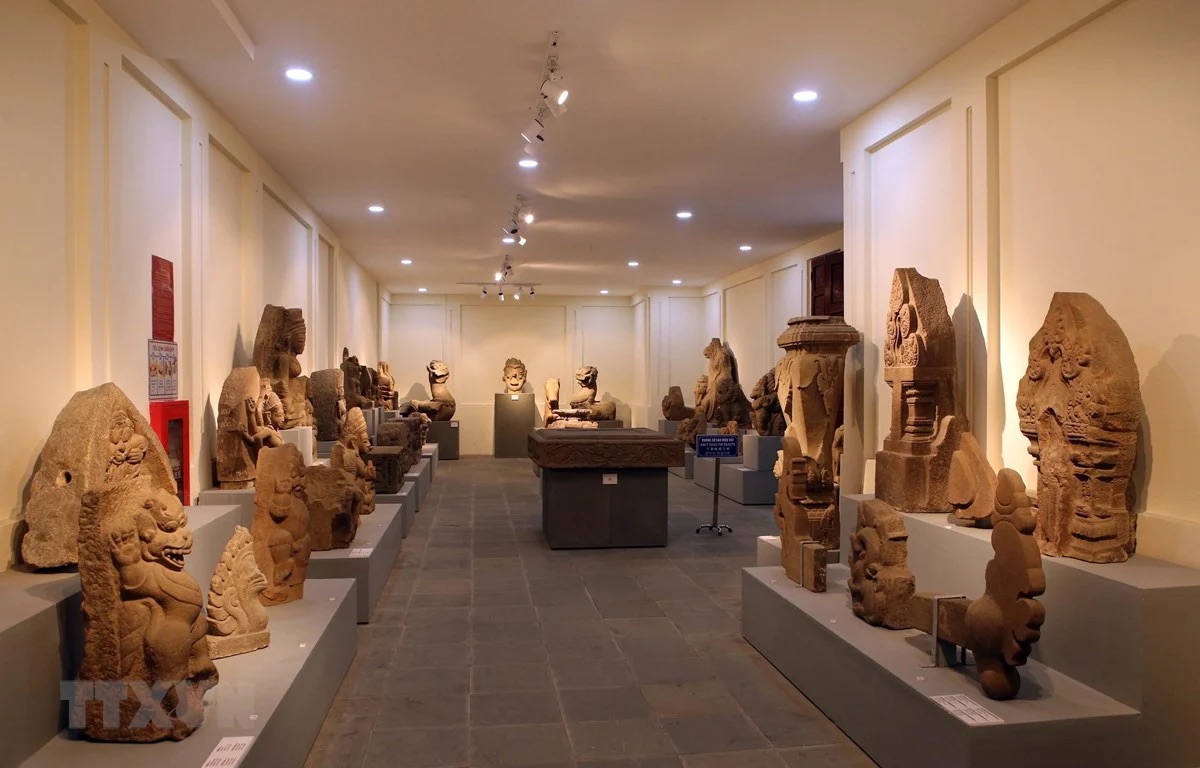
Step inside to discover a remarkable collection of artifacts meticulously sourced from Cham towers and citadels across South Central coastal provinces and the Central Highlands. These relics offer invaluable insights into the artistic expressions and cultural tapestry of the Cham people.
Planning your trip:
- Open seven days a week from 7:30 AM to 5:00 PM, the museum invites visitors to indulge in a journey through time.
- Admission fees are 60,000 VND per adult, with a discounted rate of 10,000 VND for students.
Conclusion
In essence, Vietnam’s museums offer a profound exploration of the country’s heritage. From the poignant narratives of the Vietnam War to the artistic expressions of the Cham kingdom, each museum provides a glimpse into Vietnam’s past and cultural richness. As you plan your visit, immerse yourself in the stories and artifacts that shape Vietnam’s identity. These museums promise an enlightening journey, leaving you with a deeper appreciation for the country’s history and cultural legacy.
Frequently Asked Questions
Is there a Vietnam War Museum?
Yes, Vietnam has several museums dedicated to the Vietnam War, including the War Remnants Museum in Ho Chi Minh City and the Vietnam Military History Museum in Hanoi. These museums offer comprehensive insights into the war’s history, featuring artifacts, exhibits, and displays.
What is the dress code for Ho Chi Minh Museum?
While there is no specific dress code enforced at the Ho Chi Minh Museum, visitors are encouraged to dress modestly and respectfully. As a general guideline, it is advisable to wear attire that covers the shoulders and knees, especially if visiting religious or cultural sites within the museum premises.
How much is the entry fee for War Remnants Museum Vietnam?
The entry fee for the War Remnants Museum in Vietnam typically varies for different visitor categories. As of the latest information available, the standard admission fee for adults is approximately 40,000 VND per person. Discounts may apply for students, seniors, and other eligible groups.
Does Vietnam have museums?
Yes, Vietnam boasts a rich cultural heritage and is home to numerous museums scattered across the country. These museums showcase a diverse range of topics, including history, art, culture, and science. From the Vietnam National Museum of History in Hanoi to the Vietnam Museum of Ethnology in Ho Chi Minh City, there are plenty of opportunities for visitors to explore Vietnam’s rich cultural tapestry.
How much is the entrance to the Museum of Vietnamese History?
The entrance fee to the Museum of Vietnamese History may vary depending on visitor categories and any applicable discounts. For adults, the standard admission fee is typically around 40,000 VND per person, while reduced rates may apply for students, seniors, and other eligible individuals. It’s recommended to check the latest pricing information before planning your visit.


Related Posts
Vietnam Motorbike Adventures: The Ultimate Guide
With its breathtaking landscapes, rich cultural heritage, and vibrant local experiences, Vietnam offers an unforgettable adventure for motorbike enthusiasts. Discover hidden gems, meet friendly locals, and create lasting memories as you explore diverse terrains and immerse yourself in the heart of Vietnam. Why Choose a Motorbike Adventure in Vietnam? Freedom and Flexibility If you love […]
Experience the Living Conditions in Cu Chi Tunnels: Unbelievable!
Cu Chi Tunnels served as the living quarters for soldiers and civilians during Vietnam’s resistance against France and America. Today, this remarkable site stands as a symbol of perseverance, determination, and resilience during one of the most challenging periods in Vietnamese history. Discover the living conditions in Cu Chi Tunnels with Joy Journeys in the […]
Vietnam Fish Cake: A Culinary Delight
Vietnam fish cake, known for its delicious and diverse flavors, is a favorite among tourists looking to explore authentic Vietnamese cuisine. From the crispy, golden-brown texture of fried fish cakes to the fragrant, herb-infused variations found in regional specialties, these savory delights offer a true taste of Vietnam. In this article, we will take you […]